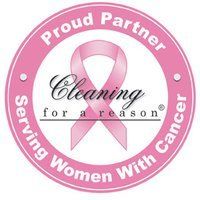Move In Cleaning Tips: Making Your Transition Easier
A big move can be an intimidating undertaking, but if you do some move in cleaning, you can make it a smooth transition. Move in cleaning is a must because nobody wants to move all of their furniture and clothing, let alone themselves, into a home or apartment that isn't up to their move in cleaning standards.
Doing your move in cleaning will make the entire move in process easier!
There are two general things that you should be sure to do when doing your move in cleaning: the first thing is do not move on the the next room or space until you're completely done with the move in cleaning in one room. This is a great idea because you won't forget to go back and finish the move in cleaning in some of your rooms, plus you'll be able to fully check a room off of your move in cleaning checklist... which is always satisfying!
Also, it's always best to do your move in cleaning from top to bottom so that you'll not have to clean the same areas twice (doing move in cleaning once is enough). Here are some more great tips from About.com that get into the details of what you should include in your move in cleaning checklist.
Clean Your Home Before You Move In
A Cleaning Checklist
By Diane Schmidt, About.com Guide
Whenever we move into a new place, the first thing I do is make note of all the things that need to be cleaned. Since it's rare that we move locally, we usually don't have a chance to do a thorough clean before our stuff arrives; instead, we have to clean around our things, which is not ideal, but does work. It just requires a little more patience.
The Kitchen
Maybe because I really hate a dirty kitchen, plus I find that people's cooking smells still linger long after they're gone, I usually tackle the kitchen first. It's also the place where I really spend a lot of time and energy making sure I've cleaned every surface. Again, this is particular to me and you might find that the previous owners barely used their stove or kitchen cupboards - lucky you!
Appliances
This is where you may need to use a heavy-duty cleaner, which may include appliance cleaner, such as a wax or paste. I'd also recommend baking soda and water, along with sponges or a heavy-duty cloth. Starting with the stove, remove all elements and clean this area using your heavier cleaner. If you're using a brush, make sure you use a brush that won't scratch the surface. Soak the metal trays and racks in a sink full of hot, soapy water while you clean the rest of the stove. Next, take a look inside the oven, and if need be, apply an oven-cleaner. Most take approximately 20 minutes to work. This gives you time to do the rest of the stove.
Make sure you clean under the hood and use a grease-remover if you find the regular cleaner isn't getting off the tough stuff. I usually lay down a sheet of brown paper just to collect any drips that might fall.
Once you've cleaned the top and front of the stove, remove it from the wall and clean beneath it. And if possible, clean the sides, too, along with the front panel and temperature dials.
Now, tackle the refrigerator. Hopefully, it's been cleaned out, but even if it has, it's always a good idea to clean it well, including removing the drawers and bins and washing them out. Wash the inside walls and shelves, removing anything that can be removed and washing it separately in the sink or bathtub. Check the freezer. If the fridge has been unplugged, wipe down the inside or clean it thoroughly if it needs it. I suggest unplugging the fridge if it hasn't been and letting it warm up before cleaning it. This will make it easier to clean. Also, use a soft cloth as anything harsher will scratch the surface.
Move the fridge out from the wall and clean behind it, then on top and its sides, too. Dust and dirt also gathers on handles and along the plastic sealing that encases the doors.
Kitchen Cabinets and Counters
Use a mild cleaner to clean the inside of cabinets, especially if they're painted or lined. If they aren't lined, consider using a liner to ensure that the insides are ready for your dishes. Lining paper can be purchased at any home store. I tend to you the kind that doesn't stick, so it can be removed at any time.
Clean the top of cabinets, and cabinet doors. If the surface is wood, use a wood cleaner or a mild soap. For grease-stains, use baking soda and water. Make a paste and apply it, letting it sit for a few minutes. Also clean handles and inside drawers.
Counters usually require less work, just make sure you clean between cracks using a putty knife to remove any debris. Clean back-splashes with a mild cleaner or baking soda and water.
Sink
I use a chlorine-free bleach to clean the sink by putting some in a spray-bottle and adding water to it. Spray the sink well and let it soak for a while. Then rinse thoroughly. Also, bleach the plugs by placing them in a small amount of bleach-water and letting them sit for a few minutes. Rinse well. Sink odors can be removed by mixing baking soda and water together, then pouring it down the drain.
Cleaning Walls
I usually clean the walls next, because they tend to be a larger job, one that I find I'll leave if I don't do it before we start to unpack. Unless the previous owners had recently (and I mean, very recently) painted the interior, you don't necessarily have to clean them. If it's a house that has been occupied by small children, look for fingerprints closer to the floor and around light switches and corners. Liquid stick cleaners from companies such as Tide work well to remove some of the more stubborn stains. Another great solution for sticky spots, one which requires very little elbow grease, is to apply a small amount of fabric softener to a sponge then rub it on the area. Whatever has stuck to the wall will disappear. This works really well for removing wallpaper or paper borders, too.
Step-By-Step Cleaning - Walls
- Remove all dust and cobwebs, especially in corners and around heating vents.
- Grab a sponge, or as I prefer, a sponge-mop to reach those hard to reach areas, and fill a bucket with warm, soapy water. You can use a
- mild detergent or dish soap. Detergent works well for any hard-to-remove stains.
- Wash the walls making sure that any dirt or cobwebs that linger behind are wiped away.
- Wipe the molding and baseboards.
- Clean the light switch plates and along any door frames.
Cleaning Floors
Whenever we move into a new home that has carpet, we usually hire a professional cleaner to steam clean them prior to our move date. If that isn't possible, or the previous occupants claimed they had the carpets cleaned, then your new home probably just needs a thorough vacuum. Make sure you ask the previous owners if they had any pets; if they did, you may want to protect against possible fleas, especially if you have pets of your own.
For wood floors or faux wood, sweep the floor well, making sure to clean under heating vents and under appliances. Use a mild soap to clean its surface; wood soaps, such as Murphy's, work well to remove dirt and give it a polished shine (smells great, too!).
By getting your move in cleaning done before you move into your new space, you're making the potentially daunting move in much easier on you, and those you enlist to help. Once you get your move in cleaning out of the way, you're free to start unpacking and organizing all of your things without worrying about whether you're putting them in a clean place.
One key to making the move in process easier for you is to label, and there can never to too much labeling. Making sure that you label all of your boxes ensures that they end up in the right room. Labeling combined with this great move in cleaning checklist will help you to have your space ready for living in no time.
Enjoy your new home or apartment



